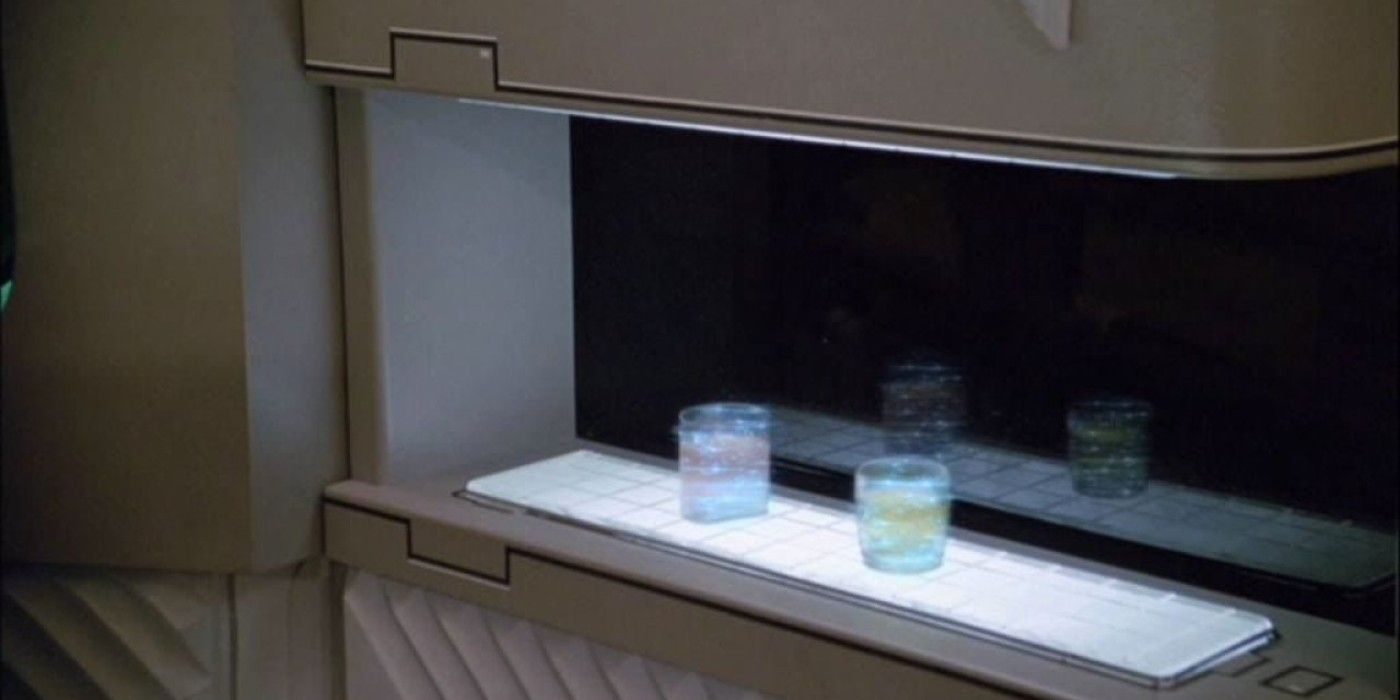WARNING: The following contains spoilers for Star Trek: Prodigy Season 1, Episode 2, "Starstruck," streaming now on Paramount+.
With the new Star Trek animated series Star Trek: Prodigy blasting off into the untamed expanse of the Delta Quadrant, the motley crew of young misfits have commandeered an abandoned Starfleet vessel known as the Protostar. And after managing to escape from the harsh mining planet of Tars Lamora and the clutches of its brutal leader, the Diviner, the de facto crew finally has the chance to properly explore their new home as they cruise the cosmos. And one such discovery marks a major technological upgrade for Starfleet that is fully functional within the Protostar's systems.
With the Protostar's crew led by the self-appointed teenager Dal, the kids decide to detain Gwyn, the daughter of the Diviner who pursued them onto the starship before it left Tars Lamora, within the Protostar's brig. And when the Protostar's maiden voyage with its new crew encounters trouble when they accidentally chart a course directly into the powerful gravity well of a dwarf star, the disruption to the ship's systems results in Gwyn inadvertently being freed. Sneaking to the Protostar's shuttle bay, Gwyn discovers a replicator advanced enough to manufacture an entire ship on the spot in a matter of minutes that would allow her to leave the Protostar and return to her father on Tars Lamora.
Replicators have been a staple in the franchise since Star Trek: The Original Series, though they've primarily been used to create food for the crew, instantly and perfectly made-to-order in a Starfleet mess hall. The technology behind the replicators has been explained as being an advanced matter converter, able to seemingly produce food and beverages out of thin air in a matter of seconds and has helped the United Federation not only overcome hunger but helped lead to much of the Federation rendering conventional currency systems obsolete as it has become a civilization of abundance.
Prodigy marks the visible debut of a replicator; though, as opposed to food replicators which appear to virtually beam in the requested food orders from air within its confined food prep area in seconds, the ship replicator is a more involved, slightly more time-consuming process. Gwyn programs the replicator to create her a small ship to escape but the process takes minutes and, in the ensuing skirmish against the Protostar's chief of security Rok, the area where the ship is being prepared causes added complications to the fighting as the requested ship's frame gradually comes into place around them. This makes the ship replicator more in line with something like a 3D printer than the food replicators which don't visibly contain as many moving parts.
Historically, Starfleet vessels are already stocked with a number of shuttlecraft whenever personnel need to be picked up or depart from the main starship outside of just sticking with the transporter systems, for whatever reason. The ship replicator reveals that Starfleet can now produce an entire fleet of smaller vessels in a matter of minutes, making conventional shuttlecraft obsolete while taking replicator technology to a higher, game-changing level and one that may resurface in the Star Trek Universe as the franchise continues to boldly move forward.
To see how replicators work in this animated series, Star Trek: Prodigy streams on Paramount+, with new episodes released on Thursdays.



